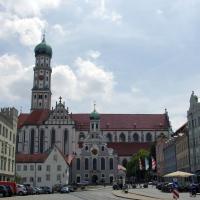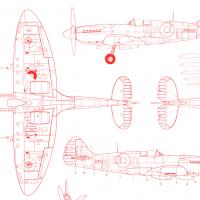Missa in tempore belli (Mass in Time of War)
for soprano, mezzo soprano, tenor and bass soloists, chorus & orchestra
- Kyrie
- Gloria
- Credo
- Sanctus
- Benedictus
- Agnus Dei
Since 1761 Haydn had been in the regular employ of the Esterházy family, first at Eisenstadt and then at the magnificent palace of Esterháza. But in 1790 Price Nikolaus I died, and his successor Prince Paul Anton disbanded the musical establishment. At the age of 58 Haydn was able to challenge the world, and he soon took up the offer of the impresario Johann Salomon to travel to give concerts in London. The exhilaration of this trip, which included the experience of seeing the sea for the first time in his life, released a new flow of creativity from Haydn; and after his return to Vienna in 1792 it became clear that his music had entered a new phase.
During Haydn’s second London visit, in 1794, Paul Anton died, to be succeeded by Nikolaus II, who re-established the music at Eszterháza. Haydn had simply been in receipt of an annuity, but now he had another regular commitment, though his duties were light. His principal obligation was to provide a Mass to celebrate Princess Marie Josepha Hermenegild’s name-day in September each year.
The second of these works (there are six in total) is the Missa in tempore belli, known in German as the Paukenmesse or Kettle Drum Mass, which was first performed in Vienna on St Stephen’s Day (26th December) 1796. This is one of Haydn’s finest compositions, with a particularly striking balance of sound. Then on 29th September 1797 it was given at Eisenstadt in honour of the Princess’s name-day.
With its martial spirit and the famous kettle drum solo in the Agnus Dei, Austrian audiences would have been uncomfortably reminded of Napoleon’s successful war against them (and their allies), culminating in the actual invasion of Austria as far as Graz.
Like no other composition, the Mass demonstrates how the refinement of instrumental technique which had marked the London symphonies had led to a deepening and enhancing of Haydn’s musical style. This is reflected, for example, in the wonderfully effective balance of the form, both within each individual movement and across the work as a whole. There is also abundant virtuosity in the association of harmonic and contrapuntal construction, and in the differentiation of the parts, not only within the orchestra but also within the quartet of soloists, as well as in the music written
for the chorus.
The slow introduction to the Kyrie immediately transforms supplication for mercy into music of great ardour. This is followed by an Allegro moderato in sonata form, with solos for the soprano and mezzo soprano. In truth the musical priorities take precedence over those of the text at this stage.
The succeeding Gloria and the Credo are rich in musical images and symbols, to an extent not previously found in Haydn. The Gloria is in three sections: Haydn set the words ‘Qui tollis’ in the central section as an expressive duet for solo cello and bass soloist within the faster outer movements, thus achieving a moving intensity of feeling.
The Credo opens with a solemn fugal statement of belief by the chorus, which contrasts with the lyrical intermezzo that is the ‘Et incarnatus’. The joyful proclamation of the Resurrection leads to a fast-moving and lightly scored fugato at the words ‘Et vitam venturi’.
The very brief Sanctus and the reflective Benedictus (which is given mainly to the soloists) are followed by what is undoubtedly the climax of the work, the powerful Agnus Dei. The opening slow section is permeated by quietly menacing and insistent drum rolls. The martial atmosphere persists as fanfares herald the concluding ‘Dona nobis pacem’. Of all the movements of the Mass, this is undeniably the boldest. As such it is surely the model for that composition which would represent the summit of the whole development of sacred music during the years of the classical period in Vienna and beyond: Beethoven’s Missa Solemnis.
Composer: Haydn Wiki Link: http://en.wikipedia.org/wiki/Missa_in_tempore_belli Title of Musical Work: Paukenmesse (Mass in Time of War)
